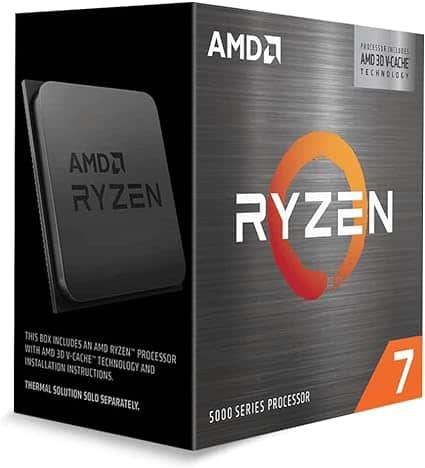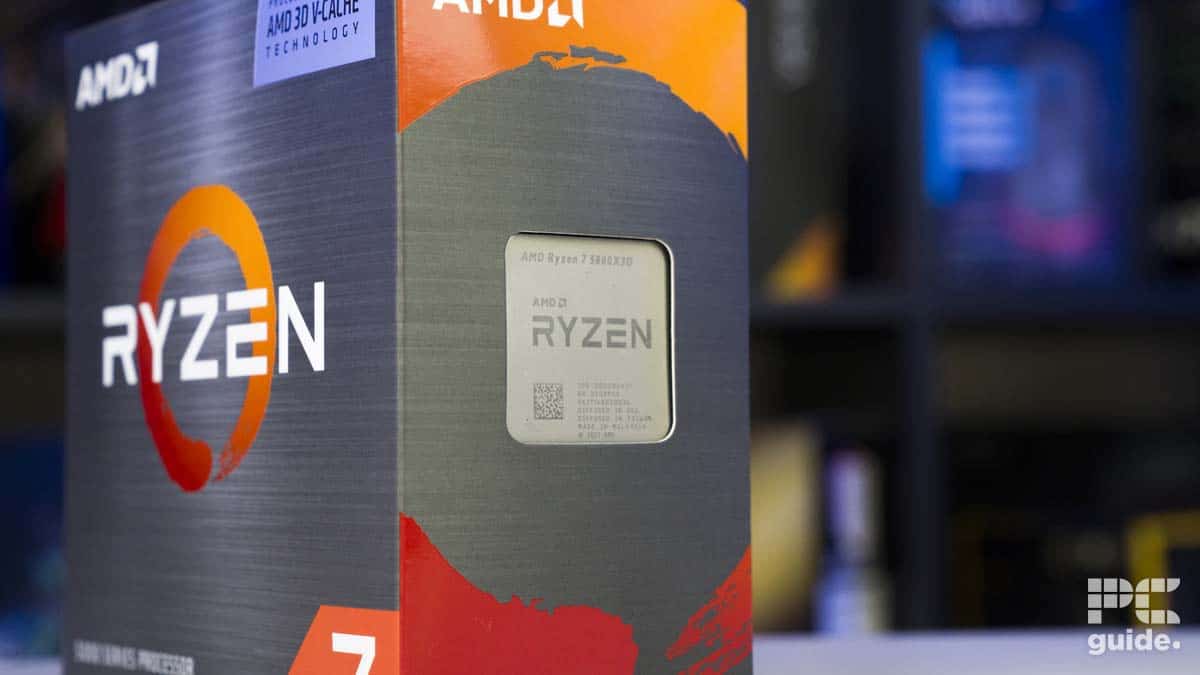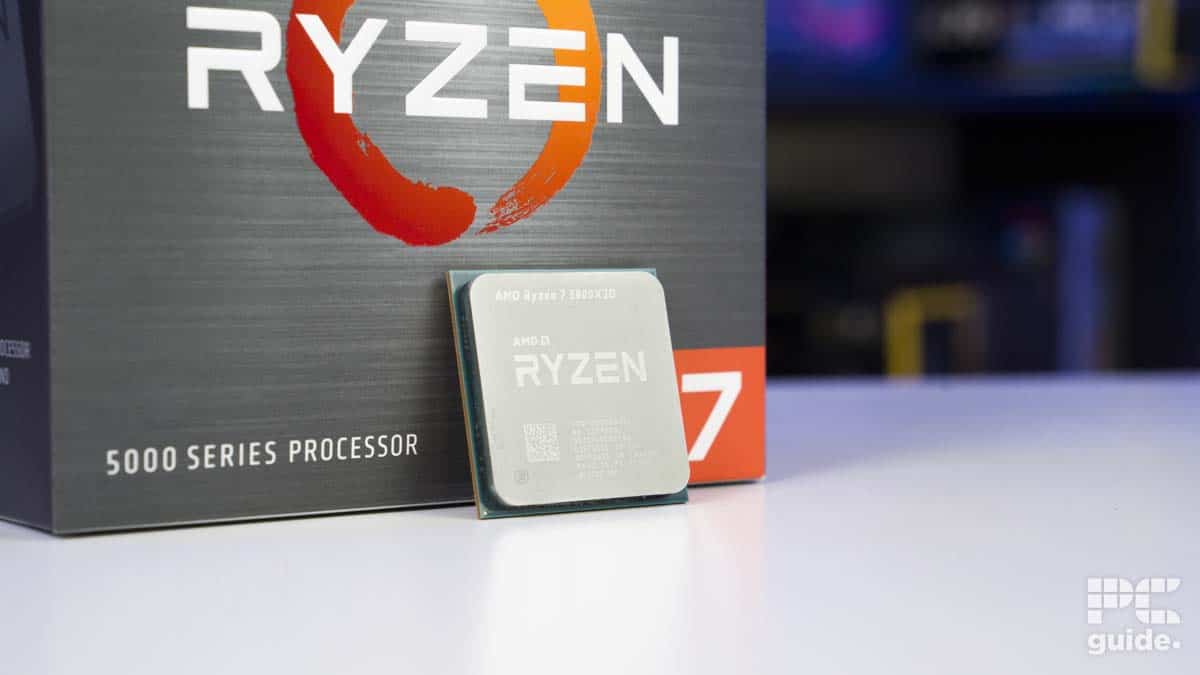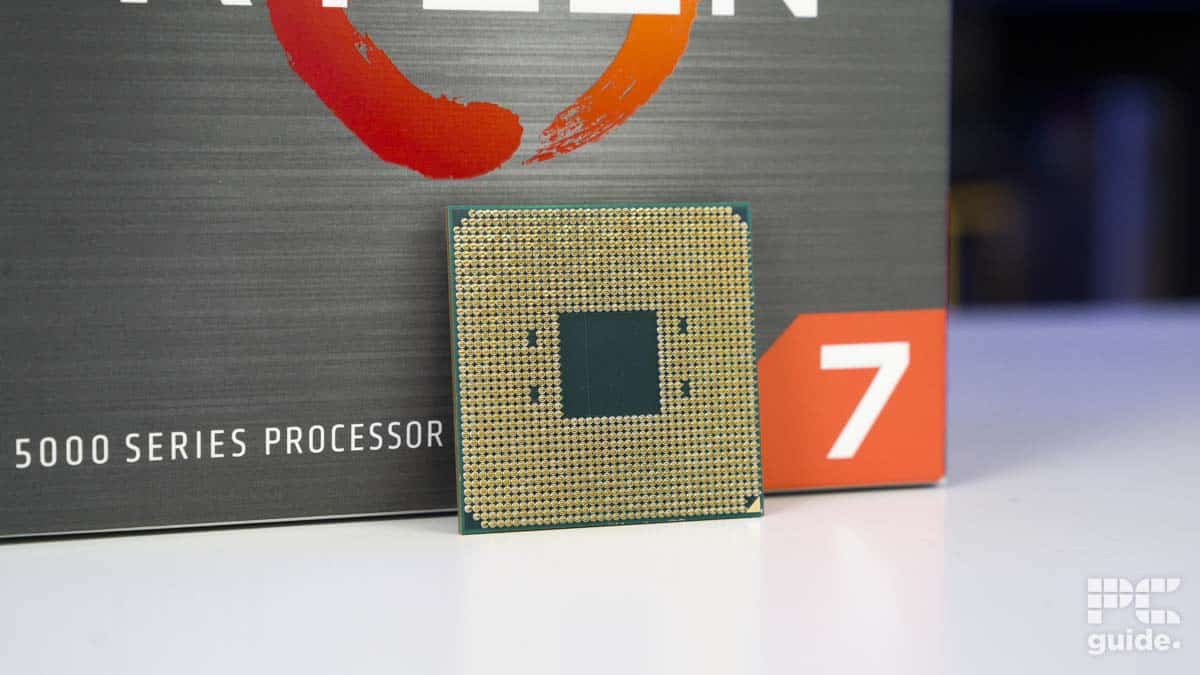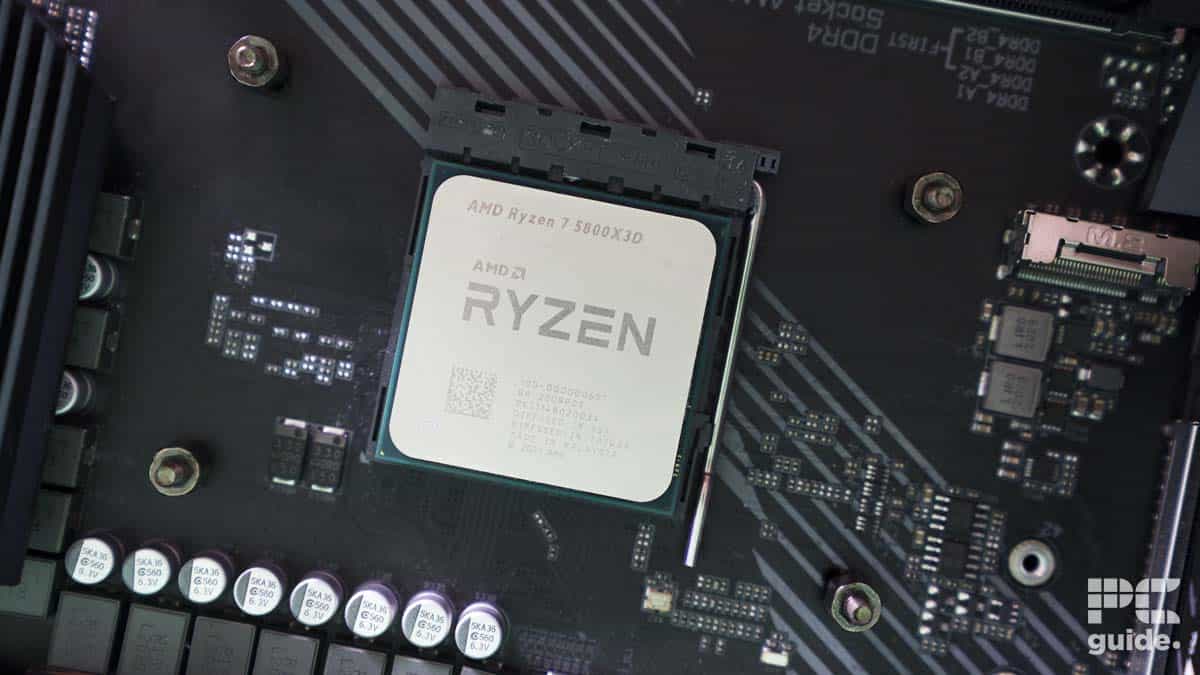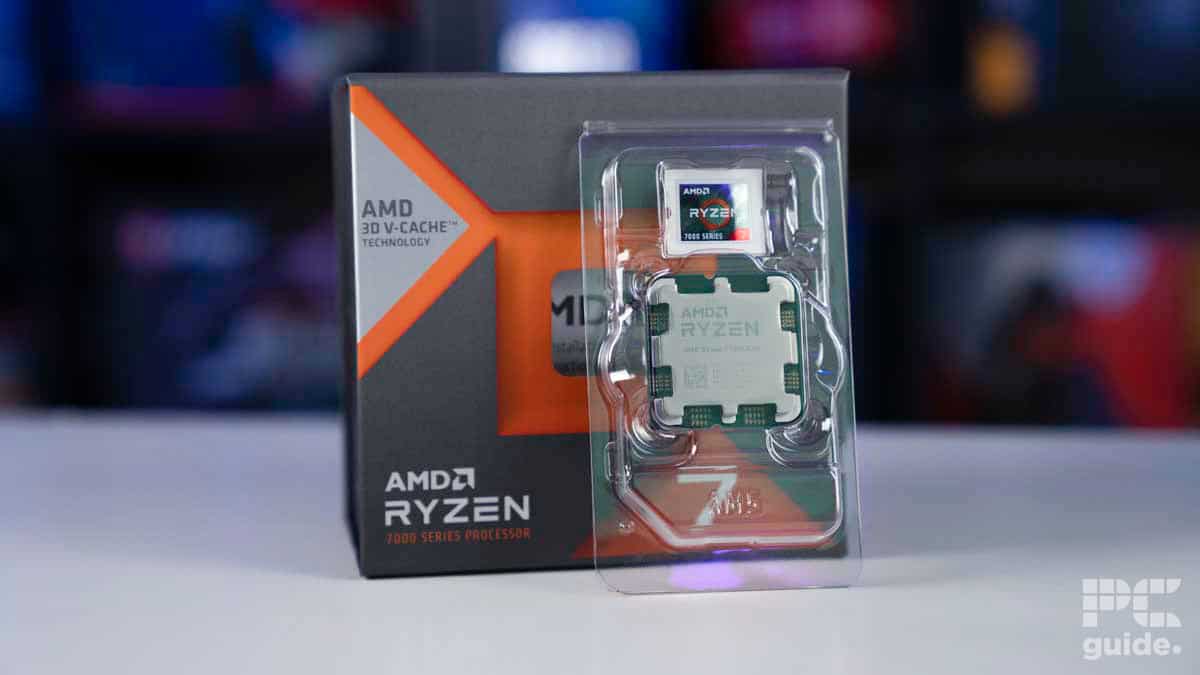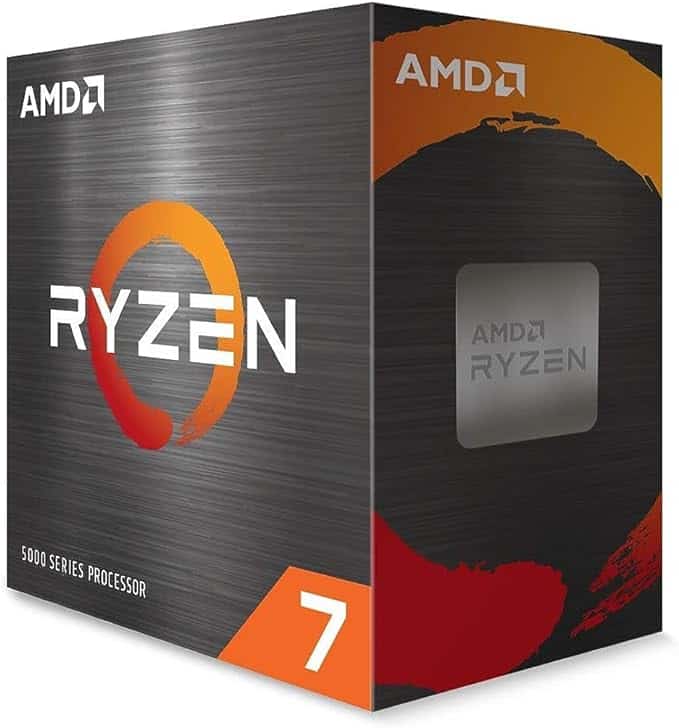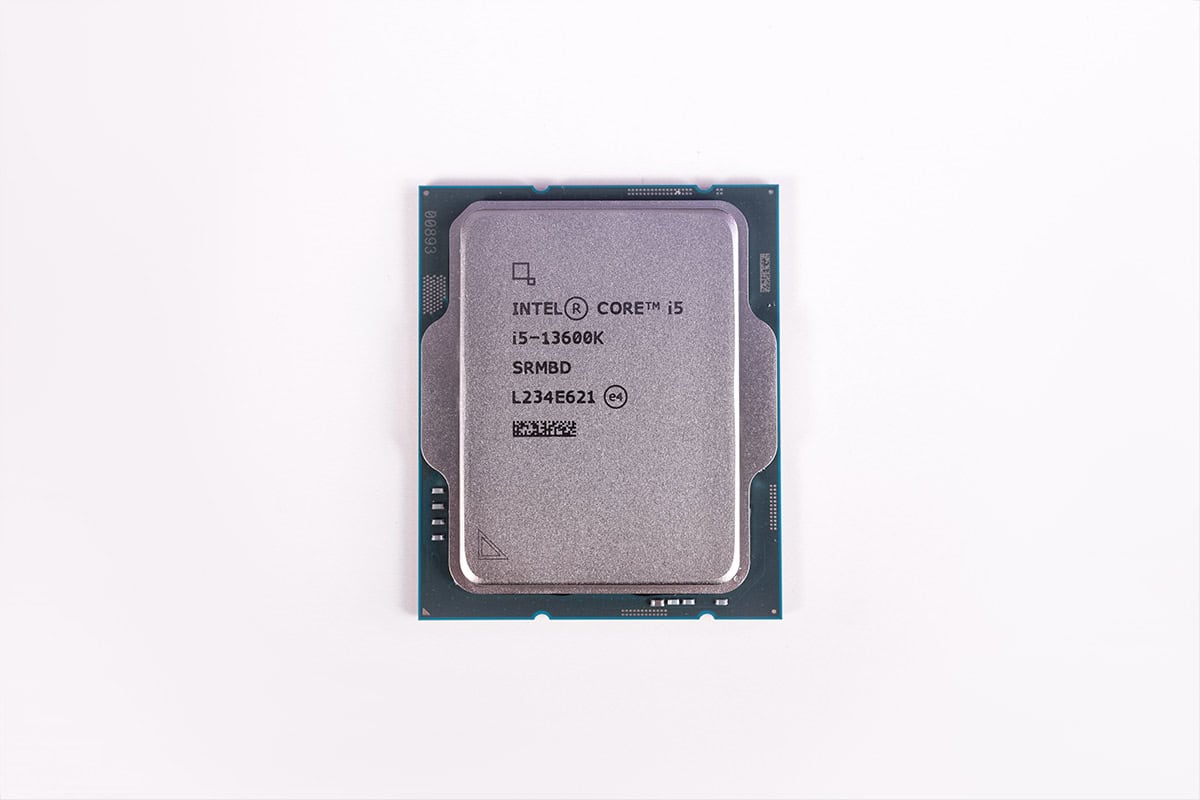AMD Ryzen 7 5800X3D review – Is the X3D worth it on AM4?
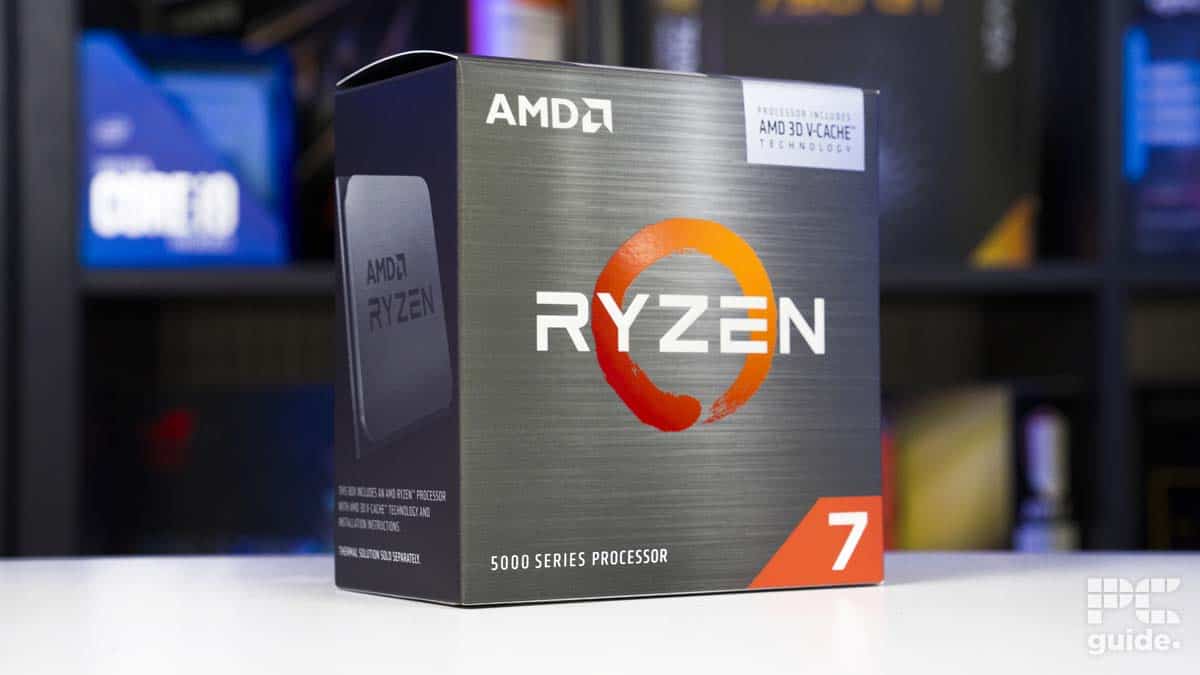
Table of Contents
The Ryzen 7 5800X3D is a marvelous feat of engineering, the first CPU ever to feature AMD’s 3D V-cache, this Chip paved the way for the modern iterations of 3D stacked V-Cache processors. The CPU was released back in April 2022, which serves as a bit of an advantage when it comes to hunting for deals.
This 8 Core 16 thread Ryzen differs from all the other AMD CPUs (or did at the time) because it held a pretty dangerous weapon against its competitors. You see, the standard 5800X3D couldn’t really compete with the likes of the 12900K and KS from Intel, but if you add a little X3D into the mix, you’d be surprised at what AMD could achieve. Personally, I love the 5800X3D, but does it hold up well today as a viable option? Is it one of the best CPUs on the AM4 platform?
Prime Day is finally here! Find all the biggest tech and PC deals below.
- Sapphire 11348-03-20G Pulse AMD Radeon™ RX 9070 XT Was $779 Now $739
- AMD Ryzen 7 7800X3D 8-Core, 16-Thread Desktop Processor Was $449 Now $341
- ASUS RTX™ 5060 OC Edition Graphics Card Was $379 Now $339
- LG 77-Inch Class OLED evo AI 4K C5 Series Smart TV Was $3,696 Now $2,796
- Intel® Core™ i7-14700K New Gaming Desktop Was $320.99 Now $274
- Lexar 2TB NM1090 w/HeatSink SSD PCIe Gen5x4 NVMe M.2 Was $281.97 Now $214.98
- Apple Watch Series 10 GPS + Cellular 42mm case Smartwatch Was $499.99 Now $379.99
- ASUS ROG Strix G16 (2025) 16" FHD, RTX 5060 gaming laptop Was $1,499.99 Now $1,274.99
- Apple iPad mini (A17 Pro): Apple Intelligence Was $499.99 Now $379.99
*Prices and savings subject to change. Click through to get the current prices.
- Cores: 8
- Threads: 16
- Boost speed : Up to 4.5 GHz
- Base speed: 3.4 GHz
- L3 Cache: 96 MB
- TDP: 105W
- Platform: AMD (AM4)
The 5800X3D paved the way for the 3D V-cahce equipped CPUs we know and loved today. It rivalled CPUs generations above it in gaming workloads, but that’s all it really is, a gaming CPU.
- Fantastic gaming performance
- Affordable thanks to it’s age
- Well supported platform
- 3D V-cache
- Terrible workstation performance
- No included cooler
- Purely a gaming CPU
Why we gave this CPU a 3.5
This CPU is a fantastic gaming machine capable of great things when locked into any game that can take advantage of its cache. However, this performance comes at a cost to the CPUs ability to perform outside of games. Because of the cache, the X3D is locked to overclocking, and it is unable to boost to high speeds, leaving it to perform poorly in tasks that do not utilize its cache. Therefore, we have given this CPU a 3.5. If you were to only use this CPU for gaming, it would be a 4.5.
To cut a long review short, we love the X3D despite its limitations, the performance in games you get from the new cache comes at the cost of power outside of gaming, an issue that AMD has made progress on within the later generations. If you want a pure gaming CPU, with the savings that sticking with AM4 brings, then this Ryzen CPU might be the one for you.
CPU specifications

Before we can go on with the show and reveal how well this AM4 beast did in our benchmarks, we must outline the specifications it holds, to gain a clearer understanding of why it performs as it does. Here are the specifications of our Ryzen 7 X3D CPU:
- Cores: 8
- Threads: 16
- Base clock speed: 3.4GHz
- Boost clock speed: 4.5GHz
- L2 Cache: 4MB
- L3 Cache: 96MB
- TDP: 105W
- Socket: AM4
As you can see, the CPU is very similar to the 5700X, it’s just a little slower on the core boost speed. The real focal point is the cache, 96MB of L3 cache, this is divided into 32MB of standard cache and 64MB of all new 3D V-cache. Allowing this CPU to compete with CPUs far beyond its own generation.
The only thing that lets this CPU down, is that the 3D V-cache limits the performance of the CPU outside of gaming workloads. The X3D does not perform as well as the standard 5800X in non-gaming workloads. Not only that but the X3D is practically locked to overclocking, bar a small factor set allowance. This is all because the new cache is very sensitive to high speeds and temperatures, and the CPU had to be dialed down a little to accommodate that.
However, the performance increase in games more than makes up for the CPU shortcomings outside of them. This CPU was AMD’s first foray into 3D cache, which was very successful if you ask us.
It’s not all bad with X3D
The issue with the 5800X3D is that it only had one CCD, the 7000 series Ryzen CPUs have 2, one of which the cache is installed, and the other is left stock. This means that only half of that CPU is limited by the cache, a vast improvement over the 1st iteration of the technology.
Despite this, the Ryzen 7 is a gaming CPU through and through and only should be considered if you’re seriously into gaming, and don’t plan to do much else with it. If you have other uses for it in mind, then there may be CPUs better suited to your workloads.
CPU performance
We tested the Ryzen CPU on a standard test bench, we like to keep the components of this system as consistent as possible, even across generations, to ensure results are accurate. But, as with any benchmark, the performance is dependent on the equipment, so here are the components for our AM4 test bench:

| Component | Name |
| GPU | RTX 4070 Ti Super |
| Memory | Netac Shadow DDR4 @ 3200MHz |
| Motherboard | Gigabyte Aorus Pro X570 |
| CPU cooler | Corsair Elite LCD Capellix 360MM |
| Power supply | ASUS ROG Thor 1000W |
| Case | Cooler Master Masterframe |
We spare no expense when it comes to CPU testing, we equip our benches with the latest hardware to ensure all the CPUs that we test have more than enough headroom to spread their wings. With that said, let’s get on with it.
Synthetic performance
We tested the Ryzen X3D CPU in everything from Photoshop (Puget) to 7-zip, this is to get an idea of how the CPU does in a variety of different workloads. As we have mentioned, the 3D V-cache in this system limits its potential. here are the results of the synthetic benchmarking.
| Benchmark | Score |
|---|---|
| CPU Z Single | 461 points |
| CPU Z Multi | 4,889 points |
| Cinebench R23 Single | 1,112 points |
| Cinebench R23 Multi | 10,204 points |
| Geekbench Single | 1,655 points |
| Geekbench Multi | 8,671 points |
| Puget Systems photoshop | 5,950 points |
| Blender render | Monster 74.58 SPM Junkshop 52.24 SPM Classroom 36.98 SPM |
| 7 Zip Compression 32MB (10 passes) | 69.8s |
| Handbrake TOS 4K Fast 1080P encode | Average Speed 52.15 FPS Encode Time 05:40 |
As you can see, we have quite a set of benchmarks available to us. The CPU does well to keep up despite its limitations, but it does fall short of even the 5600X in some scenarios.
As you can see, this CPU is severely limited, so much so that it cannot even rival the 5600X in some of the synthetic workloads, this CPU scored 10,204 points in Cinebench for example, whereas the 5600X scored 11,151, which doesn’t seem correct. How does a CPU with 2 fewer cores and 4 fewer threads do better in a multi-core workload? especially when it belongs to the same CPU generation? That is just an example of the harshness of the limitations placed on early X3D chips by the new cache.
Similarly, compression and encoding are affected, because those workloads do not utilize this CPU’s cache. Because of this, we see much higher than expected decompression and encoding times. It’s not ideal if you’re someone who does a lot of video editing or data management.
Our benchmarks can be complicated
We highly recommend you check out the supplemental information available on all of our benchmarking software’s websites, if you want to understand more about what is a good score and what isn’t. You can also take a look at the leaderboards for some benchmarking suites to compare your CPU with this one.
Going through the synthetic benchmarks play-by-blay makes this CPU seem like it’s not worth having, so we’re not going to do that. The 5800X3D is my favorite CPU and it’s easy to cast it aside just looking at benchmarks alone. This CPU represents the start of something great, something that will likely propel AMD to the top of gaming performance, and that is the 3D V-cache technology.
If you want to see how this CPU stacks up against the one that you have, you can check out the Cinebench and Geekbench databases. This should help you visualize the performance change you may see when upgrading to this CPU. Bear in mind any hardware changes you might have to make, such as a new Power supply, or motherboard.
Where the X3D CPU does shine, however, is gaming performance. This CPU, thanks to its new cache, rivals CPUs in later generations with its gaming prowess.
Real-world performance
We test all of our games in 1080p and in low settings, this is to reduce the chance of us ever being GPU-bound and gives the CPU a chance to stretch its cores. With that being said, here’s how the AMD CPU did:
| Game | Result |
| Days Gone | 283 FPS / 1% 144 FPS |
| Cyberpunk 2077 | 279 FPS / 1% 157 FPS |
The CPU we have today excelled, and performed as well as CPU generations above it. When it was first released, the 5800X3D managed to beat the 12900KS in some gaming workloads, which is nothing short of fantastic. Not to mention that the 12900KS at the time was technically a generation above the little X3D that could. And it’s a similar story here.
Both of the games that we tested are hard to run, or once were, but now, thanks to subsequent updates and advancements in hardware, aren’t so bad anymore. Regardless, the games ran buttery smooth with hardly a single stutter between them. Now seems like an important time to remember that gaming performance is directly dependent on hardware (mostly GPU) so if you don’t get our results, don’t panic.
Both Cyberpunk and Days Gone ran at pretty much 280 FPS, the same or similar to the 7000 series CPUs we have tested. This CPU was almost able to beat the 7900X in Cyberpunk and wiped the floor with it in Days Gone. (279 vs 299 and 283 vs 276 respectively).
What do these benchmarks mean?

We use a collection of synthetic benchmarks to cast a wide net in terms of relevance for our audience, we test things like Puget (a Photoshop benchmark) and Handbrake (a video encoding benchmark) this helps us keep our results relevant to as many people as possible. These workloads suggest a more professional working environment, we specifically designed this suite to be productive, it’s where the real-world benchmarks come in that we get to gaming.
Gaming is a real-world benchmark, it tests the CPUs ability to adapt to situations on the fly and in an unscripted environment. As good and valuable as synthetic benchmarks are, they’re essentially on rails and don’t represent how a CPU will react with real on-the-fly workloads, such as gaming.
If the CPU does well in our synthetic suite, then it would make a fantastic workstation CPU, if the CPU does well in our real-world benchmarks, then it would be great at, well, gaming. Proficiency in both is a bonus.
Price
When the 5800X3D was released back in 2022, it retailed for $449, a hefty sum when you consider it’s the first of its kind, thankfully, because of its age, we can save a few bucks. CamelCamelCamel, an Amazon price tracker, states that the best price for the X3D was $269.99. It is currently on sale for $295. These were the best prices as of the time of writing.
Alternatives to the Ryzen 7 5800X3D
-
AMD Ryzen 7 7800X3D
- Cores: 8
- Threads: 16
- Boost speed : up to 5 GHz
- Base speed: 4.2 GHz
- L3 Cache: 96 MB
- TDP: 120 W
-
AMD Ryzen 7 5800X
- Cores: 8
- Threads: 16
- Boost clock speed: 4.7 GHz
- Base clock speed: 3.8 GHz
- L3 Cache: 32 MB
- TDP: 105 W
-
Intel Core i5-13600K
- Cores: 14 (6P-8E)
- Threads: 20
- Boost speed : P-Core 5.1GHz / E-Core 3.5GHz
- Base speed: P-Core 3.5GHz / E-Core 2.6GHz
- L3 Cache: 24MB
- TDP: 181W
If you want a CPU proficient in gaming workloads from Team Red, but want something a bit more up-to-date, then you can opt for the 7800X3D, it’s the 5800X3D but with all the bells and whistles that AM5 brings. On the other end of the scale, the 5600X provides a good budget alternative if you don’t need all of that gaming power, and can do with a couple fewer cores. If you want the best of both worlds and don’t mind shelling out for an LGA 1700 motherboard, then the 13600K might be more to your liking. It combines the single-core prowess of Intel’s cores with the efficiency that the big.LITTLE core technology brings.
Is X3D good on the 5000 series?

An interesting question that this CPU poses is whether or not the X3D CPU is good for this generation if it is so limited. Well, every technology has to start somewhere, it’s not like Intels big.LITTLE core technology launched as advanced as it is today, everything is launched and then subsequently improved upon. This technology is a force to be reckoned with for sure, and improvements have already been made to try and quash the limitations as much as possible in the CPU generations following. but that still leaves the question, is X3D good in the 5000 series?
If you want a very affordable gaming CPU capable of rivaling those generations ahead of it, then this CPU is well worth the investment. Sure AM4 also has its limitations, but it’s perfect if you’re constrained to a tighter budget. Also worth noting that AM4 remains in support and will do so for at least the next year or so. However. If you want a CPU to do a mix of work and play, then X3D on AM4 might not be the best choice, the drawbacks outweigh the benefits if you want it to do anything other than game. When you’re beaten by the most budget CPU in the lineup, it’s time to refocus.
Conclusion
- Cores: 8
- Threads: 16
- Boost speed : Up to 4.5 GHz
- Base speed: 3.4 GHz
- L3 Cache: 96 MB
- TDP: 105W
- Platform: AMD (AM4)
This CPU set out to dominate the gaming landscape on AM4, and it did. Famously, this CPU managed to beat the performance of the 12900KS in some gaming workloads. It came nowhere near touching the KS in other workloads, but damn it, it tried. This CPU was purpose-built for one thing, gaming.
The 5800X3D defined AMD’s gaming range of CPUs, bringing the first of its kind to don the 3D cache, paving the way for those after it. Subsequent CPUs already have vastly reduced drawbacks and enhanced benefits and it’s all thanks to the first of the bunch. This CPU is more than just an afterthought and a freakshow experiment made by AMD, it might just be the future of CPUs as we know it. Terrible at everything else though.


